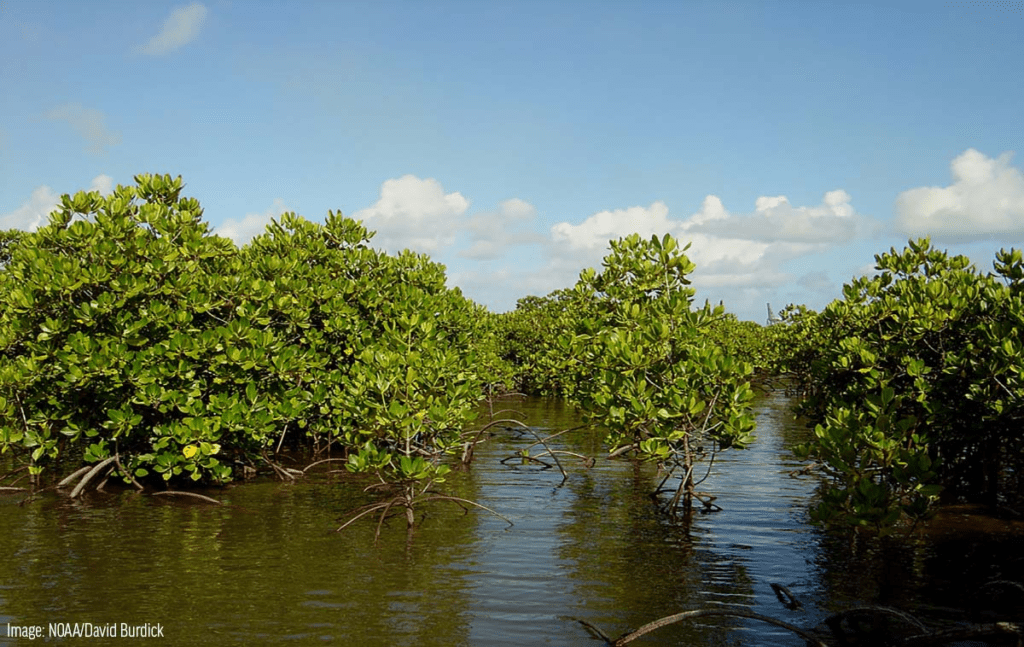Mangrove forests, thriving ecosystems where saltwater meets land, are more than just breathtaking coastal landscapes. Often referred to as the “cradle of life,” mangroves harbor exceptional biodiversity and act as nature’s coastal guardians, playing a critical role in environmental health and human well-being. However, these vital ecosystems face a multitude of challenges, demanding a collaborative effort for their conservation.
A Hub of Biodiversity and Ecological Services
Mangroves teem with life. Their intricate root systems provide a nursery for juvenile fish and crustaceans, while the dense aerial canopy shelters a diverse array of bird species. These ecosystems serve as essential feeding grounds for migratory birds and support numerous endangered animals, including manatees and crocodiles. Beyond their remarkable biodiversity, mangroves perform invaluable ecological services. Their robust root structures act as a natural barrier, absorbing wave energy and mitigating the impact of storms and erosion. This crucial defense system protects coastal communities from flooding and safeguards critical infrastructure. Additionally, mangroves act as natural filters, trapping sediments and pollutants that would otherwise smother coral reefs and degrade marine ecosystems.

A Looming Crisis: Threats to Mangrove Wellbeing
Despite their immense value, mangrove ecosystems face an existential crisis. Habitat loss is a major threat, driven by deforestation for agriculture, aquaculture, and coastal development projects. Unsustainable fishing practices and pollution from land-based sources further degrade these fragile environments. Rising sea levels, a consequence of climate change, pose another significant threat, inundating root systems and altering salinity levels, disrupting the delicate balance of these ecosystems.
A Call for Action: Collaborative Conservation Strategies
The conservation of mangrove forests necessitates a multi-pronged approach at local, national, and international levels. Protecting existing mangroves through the establishment of designated conservation areas and the implementation of stricter environmental regulations is crucial. Sustainable management practices, such as responsible shrimp farming and community-based conservation initiatives, can mitigate human impact. Educational programs focusing on the importance of mangroves can foster a sense of stewardship and encourage responsible behavior. Restoration efforts, involving the planting of mangrove seedlings in degraded areas, offer a vital path towards revitalizing these ecosystems.
Beyond Awareness: Individual Action for Collective Impact
The fate of mangrove forests lies not just in the hands of policymakers and conservation organizations, but also in the choices we make every day. Here are some ways individuals can contribute to safeguarding these vital ecosystems:
- Support Sustainable Seafood: Choose seafood certified by organizations like the Marine Stewardship Council (MSC), ensuring minimal environmental damage to mangroves and other ecosystems.
- Advocate for Responsible Practices: Educate yourself and others about the importance of mangroves and the threats they face. This can inspire action and garner support for conservation efforts.
- Travel Responsibly: Choose eco-tourism operators in coastal areas who prioritize sustainable practices and support local communities that depend on healthy mangroves.
- Minimize Your Carbon Footprint: Climate change is a major threat to mangroves. By adopting environmentally conscious behaviors and minimizing your carbon footprint, you can contribute to a more sustainable future for these ecosystems.
By working collaboratively – individuals, communities, governments, and environmental organizations – we can ensure the continued existence of these vital ecosystems.






